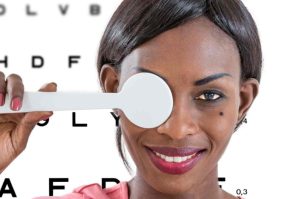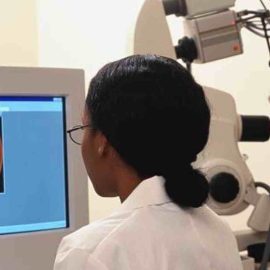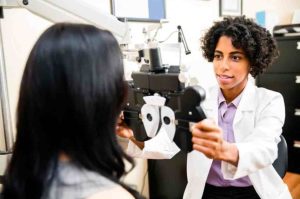Diagnosis, Detection and Treatment of Corneal Ectasia in Nigeria
Corneal ectasia, though relatively rare, presents a significant challenge in the field of ophthalmology. As a seasoned ophthalmologist practicing in Nigeria, I’ve encountered numerous cases of corneal ectasia and have witnessed firsthand the impact it can have on a patient’s quality of life. In this comprehensive article, I aim to shed light on the diagnosis, detection, and treatment of corneal ectasia in Nigeria, emphasizing the importance of timely intervention and highlighting the challenges and opportunities in our healthcare landscape.
Corneal ectasia is a progressive thinning and bulging of the cornea, leading to irregular astigmatism and visual distortion. It often manifests in conditions such as keratoconus and iatrogenic ectasia following refractive surgery. In Nigeria, where access to specialized eye care services can be limited, diagnosing and managing corneal ectasia pose unique challenges. However, early detection and appropriate treatment can prevent disease progression and preserve vision.

Understanding Corneal Ectasia
Corneal ectasia can result from a combination of intrinsic corneal weakness and external factors such as eye rubbing or trauma. While the exact etiology remains unclear, conditions such as keratoconus have been linked to genetic predisposition and environmental triggers. In Nigeria, where factors like socioeconomic status and access to healthcare can influence disease prevalence, understanding the underlying causes of corneal ectasia is crucial for effective management.
Diagnostic Techniques
Accurate diagnosis is paramount in guiding treatment decisions and monitoring disease progression. Visual acuity testing, corneal topography, slit-lamp examination, and Pentacam imaging are among the essential diagnostic tools used to evaluate corneal ectasia. These techniques allow ophthalmologists to assess corneal curvature, thickness, and biomechanical properties, aiding in early detection and personalized treatment planning.
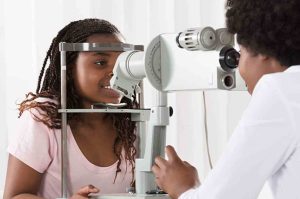
Symptoms and Clinical Presentation
Patients with corneal ectasia often present with symptoms such as blurred vision, distorted images, and increased sensitivity to light. These visual disturbances can significantly impact daily activities and diminish quality of life. Recognizing the subtle signs of corneal ectasia is essential for timely intervention and preventing irreversible vision loss.
Challenges of Diagnosis in Nigeria
In Nigeria, limited access to advanced diagnostic equipment and specialized ophthalmic services can hinder early detection of corneal ectasia. Additionally, a lack of awareness among both patients and healthcare providers may lead to delays in diagnosis and inadequate management. Addressing these challenges requires a multi-faceted approach, including investment in infrastructure, education, and outreach initiatives.
Treatment Options
The management of corneal ectasia aims to stabilize the cornea, improve visual function, and prevent further deterioration. Spectacles and contact lenses are often the first line of treatment, providing visual correction and symptom relief. For progressive ectasia, interventions such as collagen cross-linking (CXL) and intrastromal corneal ring segments (ICRS) may be recommended to strengthen the corneal tissue and reshape the corneal surface. In severe cases, corneal transplantation may be necessary to restore vision.
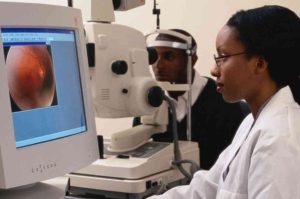
Emerging Therapies
Advances in ophthalmic research have led to the development of novel therapies for corneal ectasia. Accelerated cross-linking protocols, which utilize higher energy levels and shorter treatment times, offer the potential for faster recovery and improved outcomes. Additionally, innovative surgical techniques and pharmacological interventions are being explored to address the underlying mechanisms of corneal ectasia and enhance treatment efficacy.
Importance of Patient Education
Patient education plays a crucial role in the management of corneal ectasia, empowering individuals to take an active role in their eye health. It is essential to educate patients about the importance of compliance with treatment regimens, lifestyle modifications, and regular follow-up visits. Support groups and counseling services can provide valuable emotional support and practical advice to patients navigating the challenges of living with corneal ectasia.
Case Studies and Success Stories
Real-life case studies offer insights into the clinical course of corneal ectasia and the impact of various treatment modalities on patient outcomes. By sharing success stories, we can inspire hope and encourage individuals facing similar challenges to seek timely intervention and pursue treatment options that best suit their needs.

Collaborative Efforts in Nigeria
Addressing the complex challenges of corneal ectasia requires collaboration among healthcare professionals, government agencies, and non-profit organizations. Ophthalmological societies play a vital role in promoting education, advocacy, and research in the field of corneal diseases. Government initiatives aimed at expanding access to eye care services and improving the quality of diagnostic and treatment facilities are essential for reducing the burden of corneal ectasia in Nigeria. Partnership with international organizations can facilitate knowledge exchange and resource sharing, ultimately benefiting patients and healthcare providers alike.
Preventive Measures
Preventing corneal ectasia begins with early detection and intervention. Implementing screening programs in schools, communities, and primary care settings can identify at-risk individuals and facilitate timely referral to ophthalmic specialists. Public health campaigns aimed at raising awareness about the signs and symptoms of corneal ectasia can empower individuals to seek prompt medical attention and access appropriate treatment options.
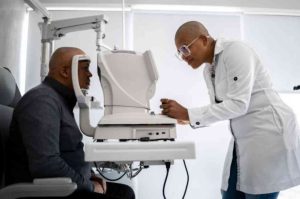
Future Directions in Research
Continued investment in research is essential for advancing our understanding of corneal ectasia and developing innovative therapies. Genetic studies may uncover novel biomarkers for predicting disease progression and identifying individuals at high risk of developing ectatic disorders. Advanced imaging techniques, such as optical coherence tomography (OCT) and high-resolution ultrasound, hold promise for improving the accuracy of diagnosis and monitoring treatment response. Furthermore, the development of targeted pharmacological interventions that modulate corneal biomechanics and cellular metabolism may offer new avenues for personalized treatment approaches.
Conclusion
In closing, the journey through the diagnosis, detection, and treatment of corneal ectasia in Nigeria is not merely a medical endeavor; it is a testament to resilience, hope, and the unwavering commitment to restoring sight and improving lives. Despite the challenges posed by limited resources and awareness, the tireless efforts of dedicated healthcare professionals, coupled with the courage and determination of patients, illuminate a path forward. Every successful diagnosis is a beacon of hope, every treatment a triumph of the human spirit over adversity. As we navigate the complexities of corneal ectasia, let us not forget the faces behind the statistics—the individuals whose lives are forever changed by the transformative power of compassionate care. In Nigeria, as in every corner of the world, the pursuit of sight is a journey worth undertaking, fueled by empathy, solidarity, and the belief that together, we can overcome even the most daunting of obstacles.


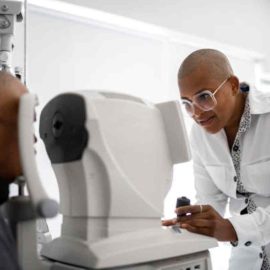

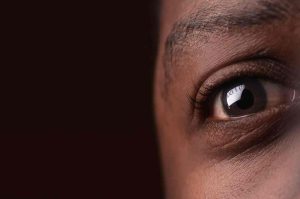 IK
IK